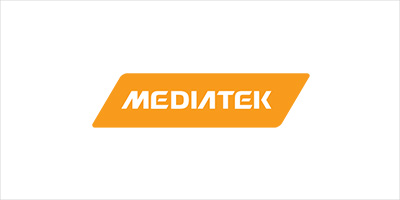MediaTek reported consolidated revenue of approximately $4.7 billion USD, an increase of 11.1% from the previous quarter
MediaTek reported its Q1 2025 earnings on April 30 — Here are some of the top takeaways:
1. Revenue up, but margin and profit growth more limited
MediaTek reported consolidated revenue of NT$153.3 billion (approximately $4.7 billion), an increase of 11.1% from the previous quarter and 14.9% year-over-year. Growth came largely from higher demand for 5G smartphones, strong performance in Wi-Fi 7 chipsets, and increased traction in AI and automotive computing.
However, gross margin fell slightly to 48.1%, down from 49.3% in Q4 2024 and 48.3% in the year-ago quarter. The company attributed this to a change in product mix and the absence of a one-time gain that had boosted gross profit last year.
Operating income came in at NT$30.1 billion ($933 million), a 40.4% increase from Q4 but a 6.6% decline compared to the same quarter in 2024. Net income rose 23% sequentially to NT$29.5 billion ($914.5 million), but was still down 6.7% year-over-year. Earnings per share stood at NT$18.43 ($0.57), compared to NT$19.85 ($0.62) a year ago.
The year-on-year decline in profits was mostly due to higher research and development (R&D) spending and an unusually strong comparison base, according to the chip company.
2. R&D investment signals AI focus
MediaTek increased its R&D spend to NT$35.8 billion (approximately $1.11 billion) — roughly 23.3% of total revenue. The company is using those funds to expand beyond its core mobile business and invest in areas like AI computing and automotive chips. Tsai noted that MediaTek is working on custom AI accelerators for enterprise and cloud use cases, with contributions to revenue expected to begin in 2026. The company is also collaborating with NVIDIA on the GB10 project, which is part of NVIDIA’s DGX Spark AI supercomputer initiative.
Tsai also commented on the shifting AI ecosystem in China: “I do not claim myself to be an expert in agentic AI, but … China’s ecosystem in … agentic AI is blossoming… We have very strong and a good relationship with many of those ecosystem players and the applications developers. So we’re providing the tools and environment that they can build upon.”
In April, MediaTek unveiled the Dimensity 9400+, a flagship mobile chip designed to support generative and agentic AI, better power efficiency and gaming performance. In a previous conversation with RCR Wireless News, James Chen, the company’s VP of product and technology marketing, described agentic AI as “a whole new way” of interfacing with a device.
“As its name suggests, it’s like an agent,” he said. “It relies on generative AI, but the new thing is that it also uses a software framework.”
That framework connects user inputs, AI models and apps to coordinate tasks across a device. The launch underscores MediaTek’s intent to compete in the “blossoming” on-device AI and mobile platform optimization.
3. Tariff uncertainty clouds outlook
Like others, Tsai characterized the impact of looming tariffs as uncertain, saying: “Our first quarter revenues reflected the structural mix enhancements driven by increasing AI and Wi-Fi 7 adoptions, as well as better-than-expected demand partially due to tariff uncertainties… We are closely observing their impact on global economies and working with our global supply chain partners and customers to navigate the uncertainties.”
He added that MediaTek’s direct exposure to the U.S. accounts for about 10% of its total revenue, and therefore, the potential impact is “limited.” He continued: “The risks for us are that we rely more in the consumer electronics, such as TVs, or some of the home devices.”
4. Smartphones still lagging
MediaTek noted that while demand for high-end 5G phones was a bright spot, sales of mainstream smartphones remained soft in Q1 — particularly in emerging markets. That mirrors broader smartphone shipment data showing a slow and uneven recovery.
Looking ahead and bottom line
MediaTek expects Q2 revenue between NT$147.2 billion ($4.56 billion) and NT$159.4 billion ($4.94 billion), a slight sequential dip but up to 25% higher year-over-year. Gross margin is projected to remain in the 47% to 50% range.
MediaTek’s Q1 results highlight the company’s push to diversify and adapt to changing market conditions. While AI and next-gen connectivity are fueling growth, macroeconomic uncertainty and uneven smartphone demand continue to weigh on the outlook. The second half of the year will likely be shaped by how well MediaTek can balance investment in emerging segments with the realities of a still-volatile — and largely unknown — global tech landscape.

